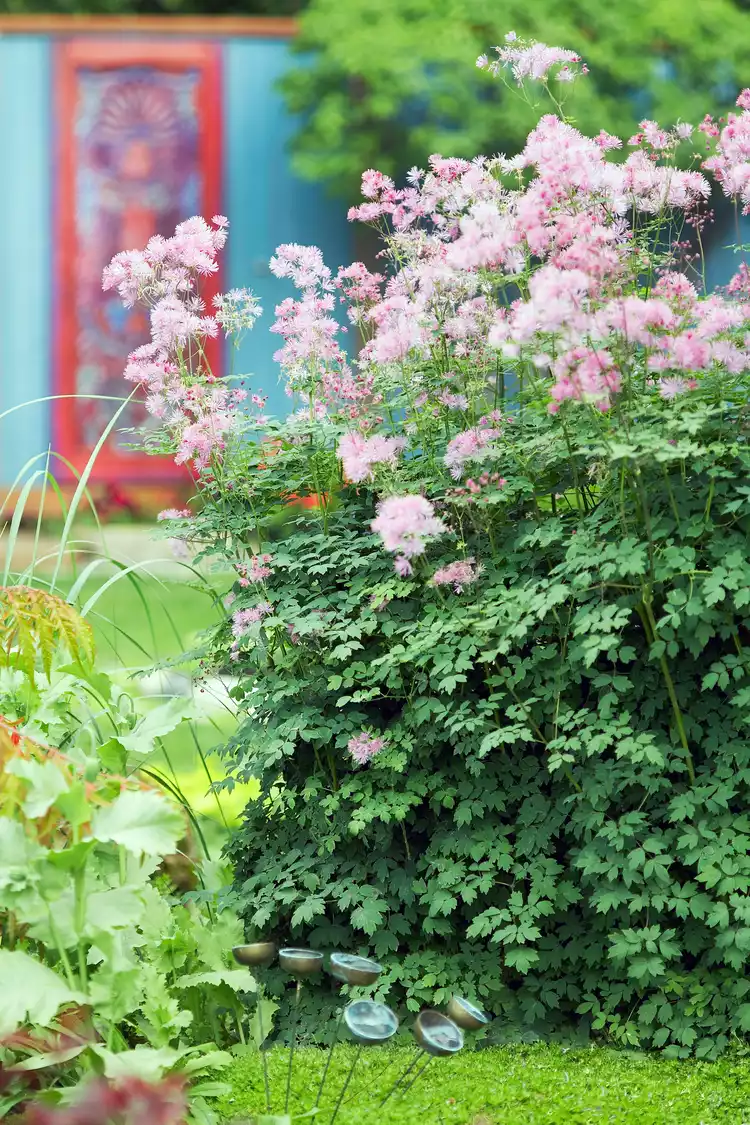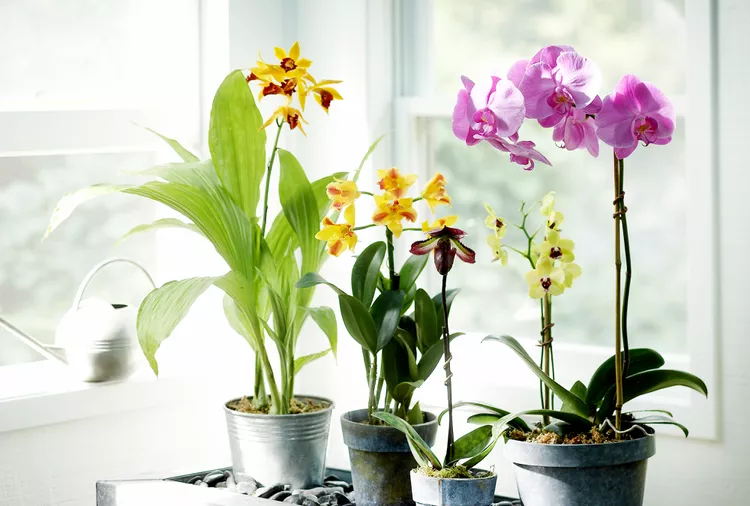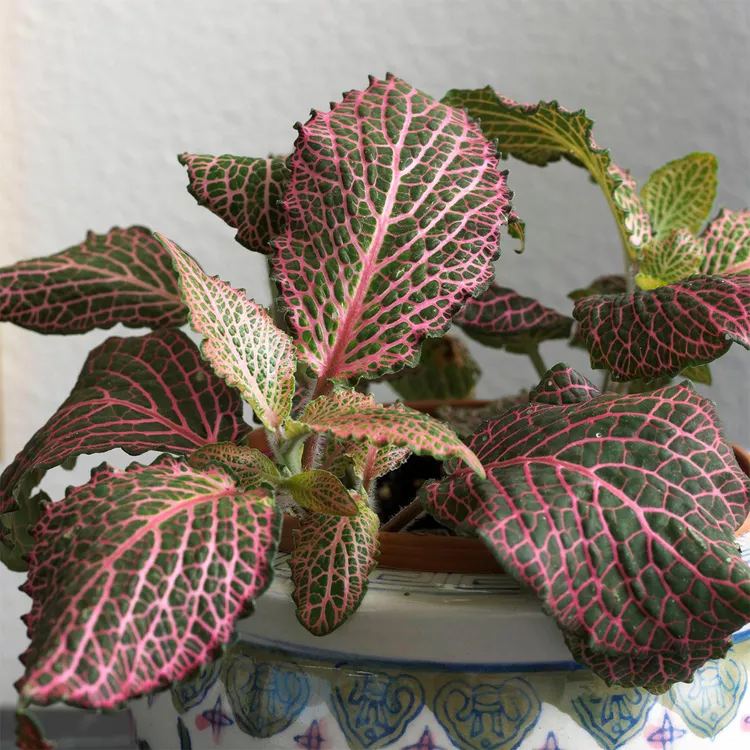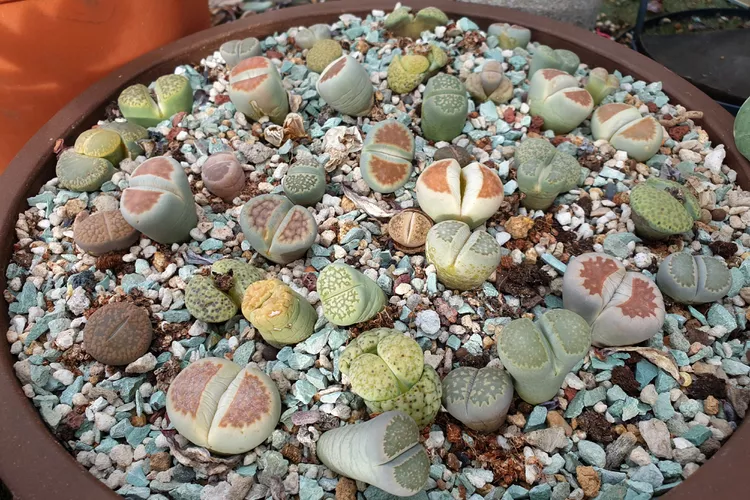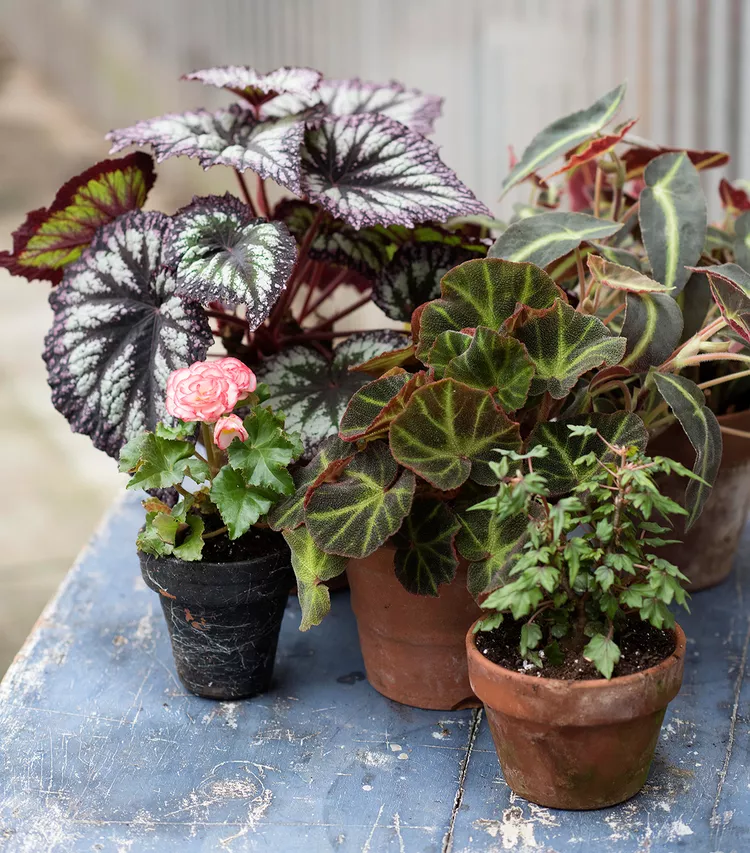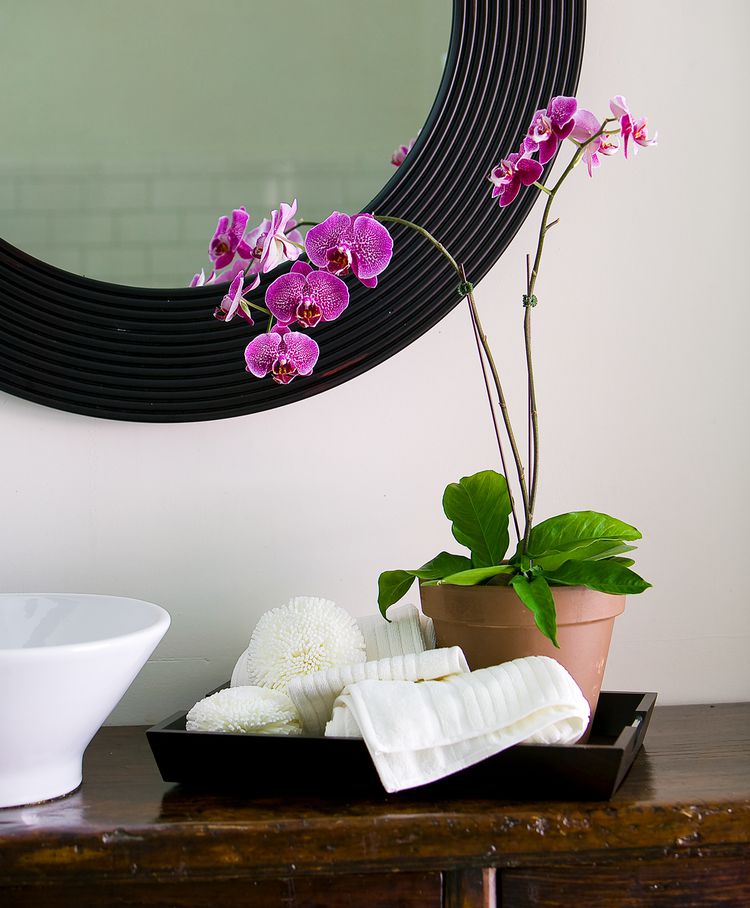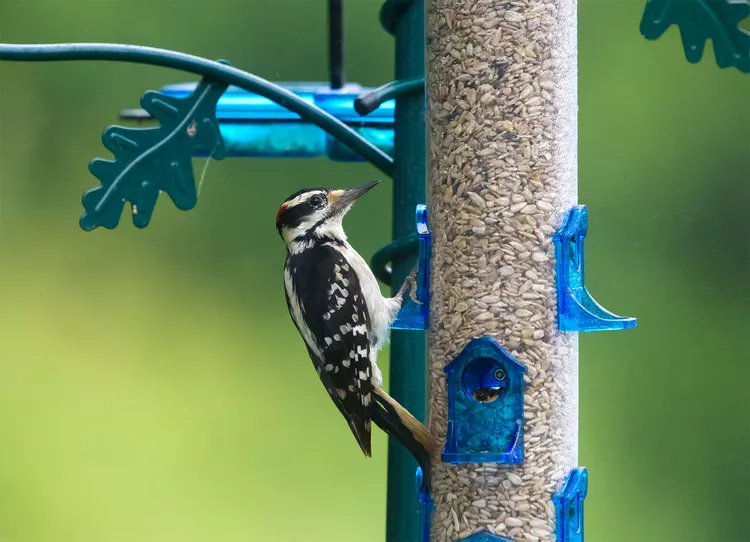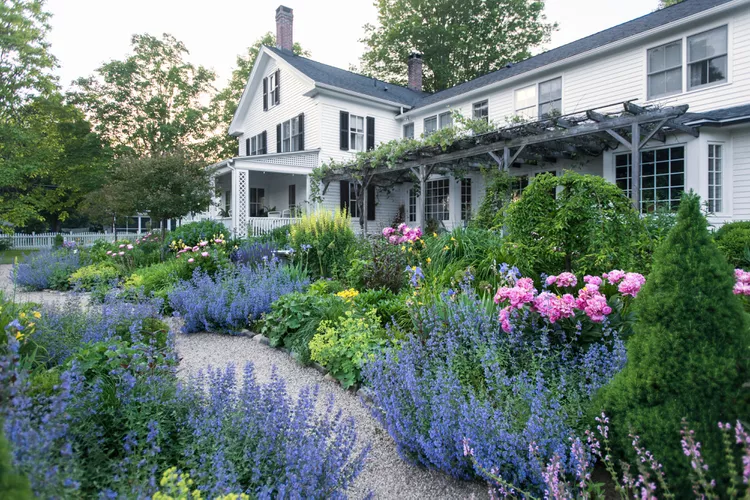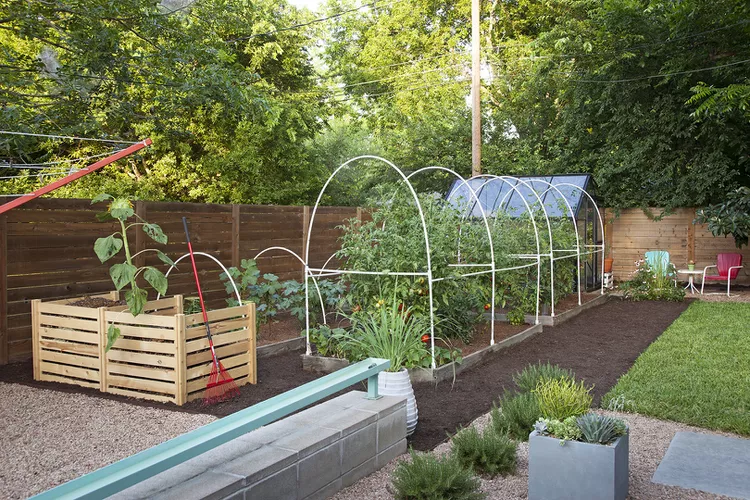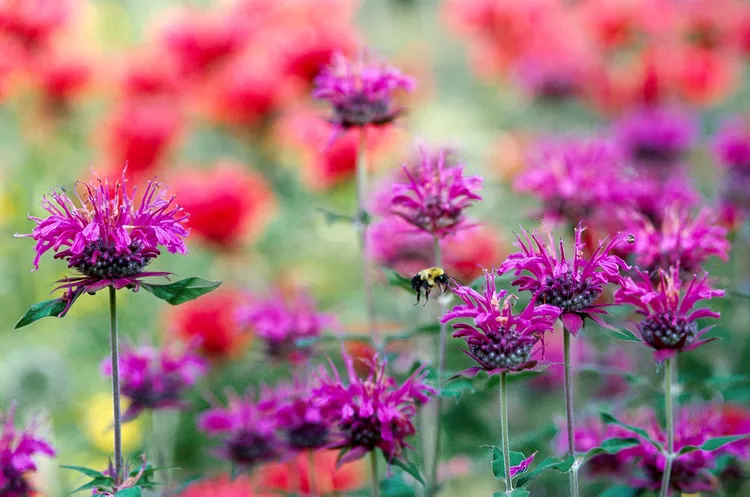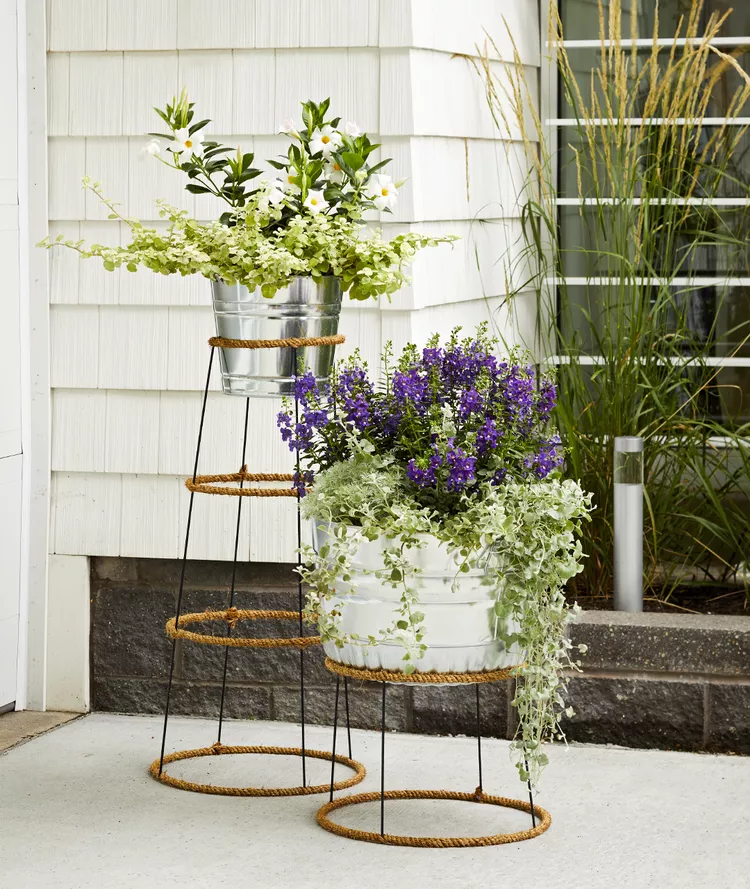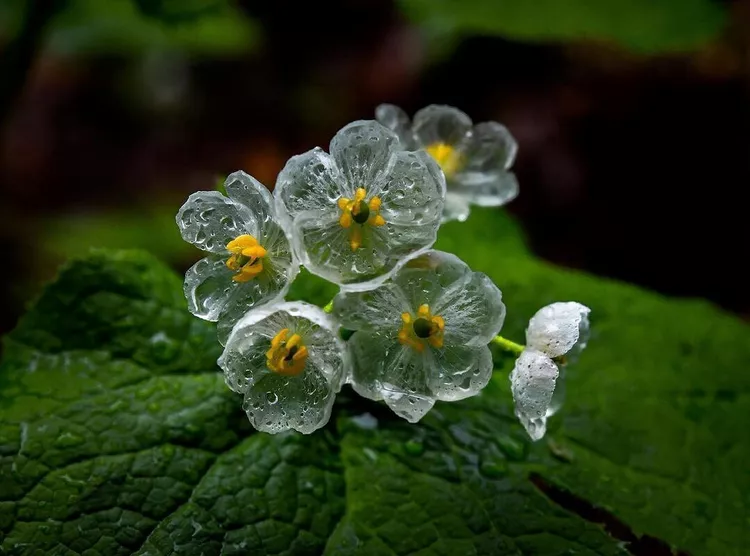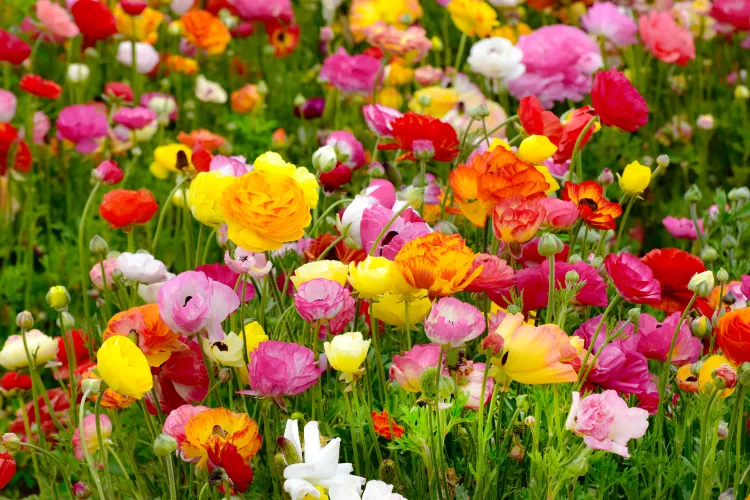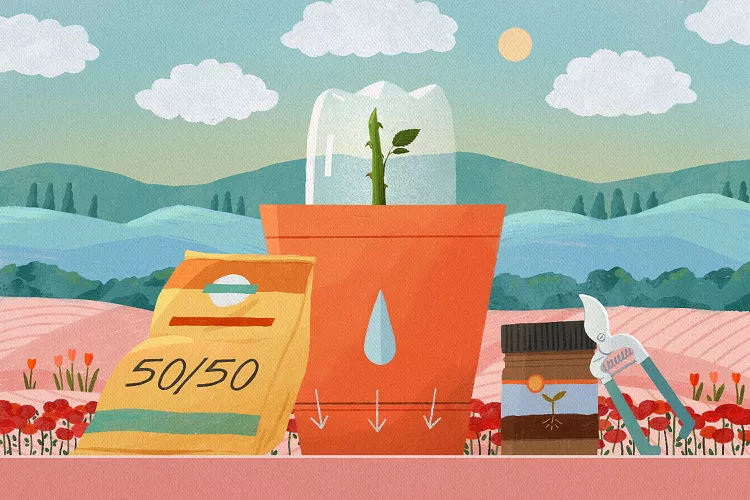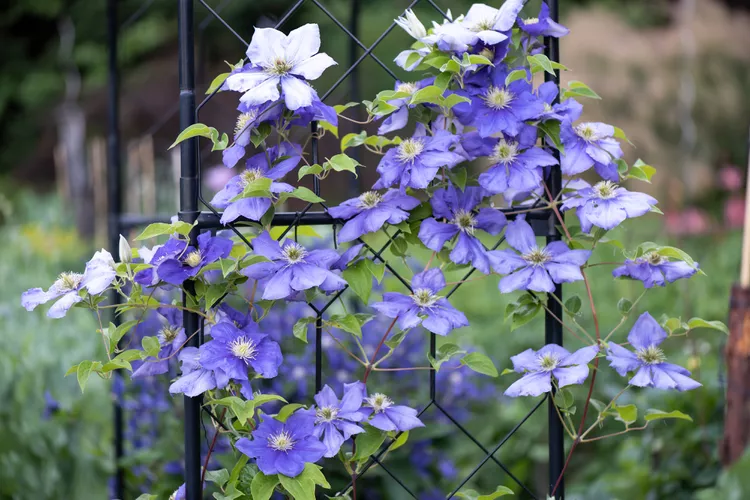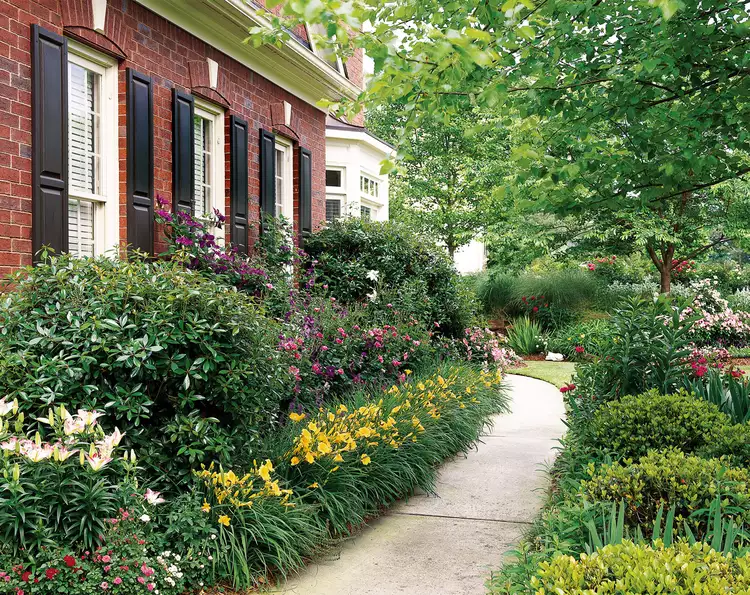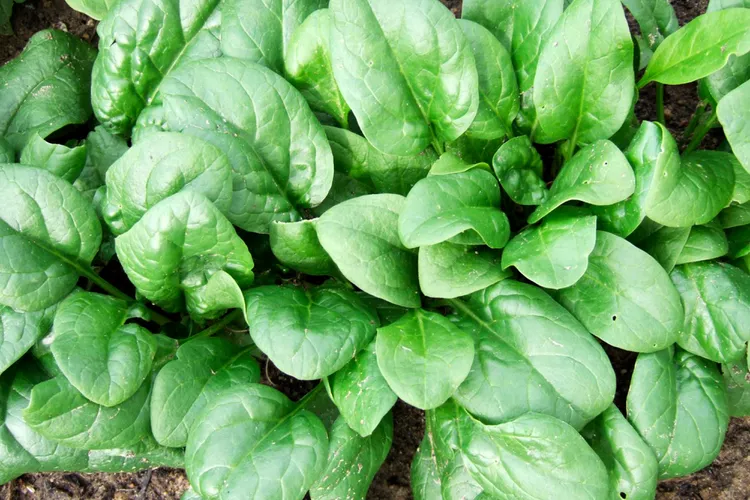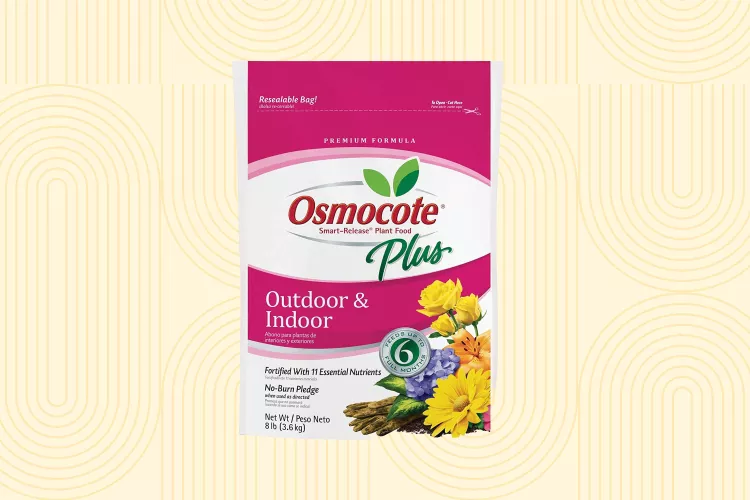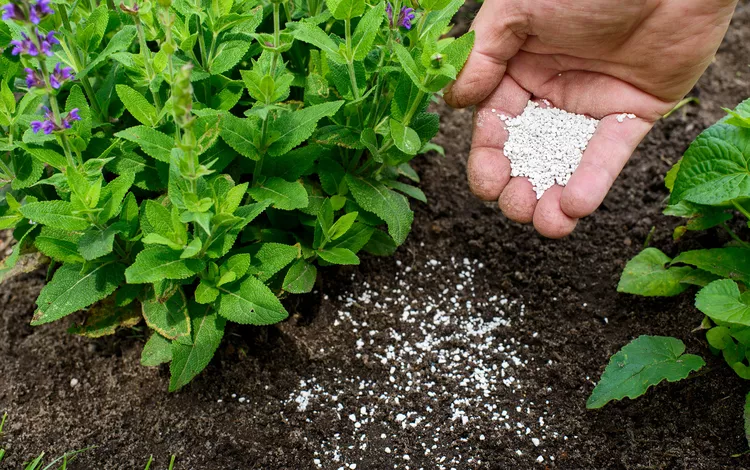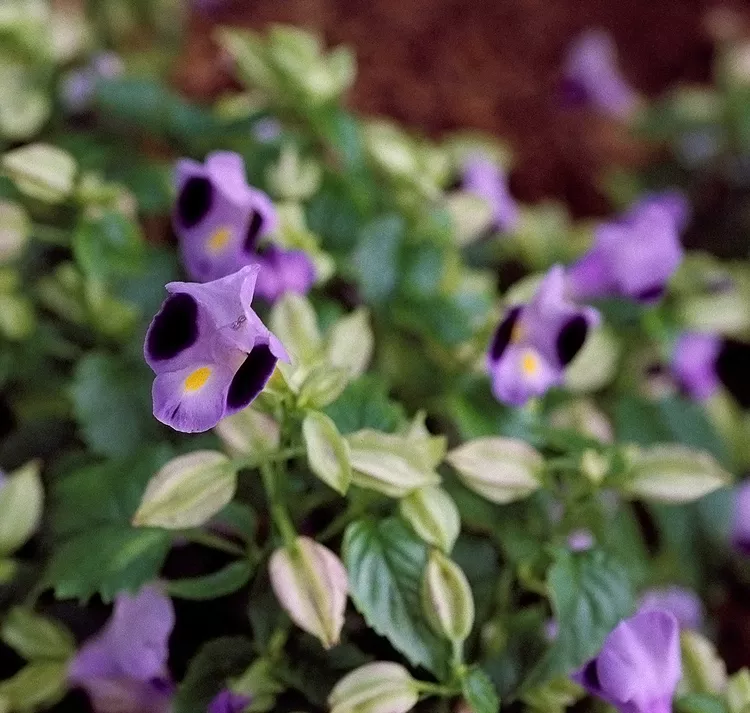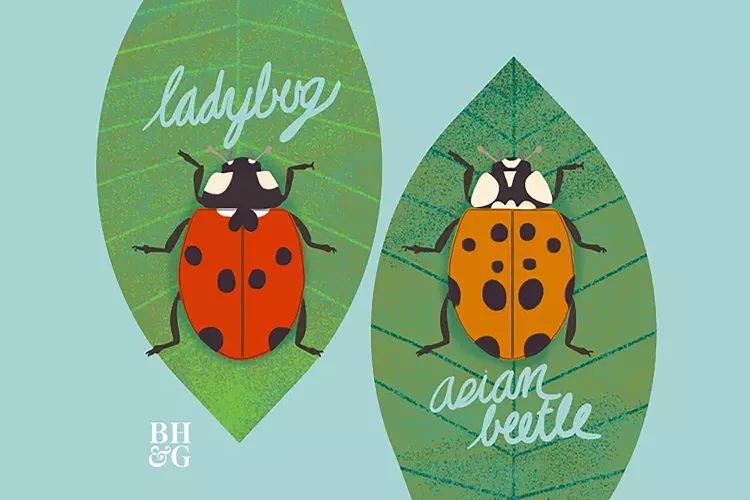Deer are hungry critters. While you're blissfully sleeping at night, deer wake up with a big appetite, and your garden is at the top of their breakfast list. Deer particularly love hostas, roses, pansies, and tulips, among the prettiest plants in a garden. But they're also partial to blueberries, so protecting your crop will make sure they're available for you to snack on rather than the deer. But, to be brutally honest, if the neighborhood herd is hungry enough, deer will eat almost anything. While there are no guarantees that they'll never nibble the following deer-resistant perennials, they usually turn up their noses and take a pass on these less tasty plants.
Astilbe
In late spring, the feathery plumes of astilbe, which come in shades of white, red, pink, and lavender, add a sophisticated charm to perennial plantings. After the flowers fade, attractive mounds of green or bronze fernlike foliage last through fall.
Plant Name: Astilbe selections
Growing Conditions: Part sun, full sun in cooler regions; moist, well-drained soil
Size: 1 to 6 feet tall, 18 to 48 inches wide, depending on selection
Zones: 4-8
Hellebore
This rugged deer-resistant perennial, also called Lenten rose, blooms from winter to spring, depending on your selection. The flowers last for months, and the evergreen umbrella-shaped leaves form attractive mounds.
Plant Name: Helleborus x hybridus
Growing Conditions: Full sun to part shade and moist, well-drained soil
Size: 12 to 24 inches tall, 24 to 30 inches wide
Zones: 5-9
Peony
Given their reputation for longevity, it’s not surprising that peonies are a deer-resistant perennial. Grown for their huge red, pink, coral, yellow, or white flowers, they make a spectacular show from early to late spring, depending on selection. Leathery green foliage remains attractive after the flowers fade.
Plant Name: Paeonia selections
Growing Conditions: Full sun and well-drained soil
Size: 1 to 4 feet tall, 2 to 3 feet wide
Zones: 2-8
Catmint
A workhorse for the sunny perennial border, catmint is both long-blooming and easy to grow. Flowers are usually lavender-blue, but selections with white, pink, or violet blooms are available. Growing wider than tall, its aromatic gray-green leaves blend easily with other sun loving perennials.
Plant Name: Nepeta selections
Growing Conditions: Full sun and well-drained soil
Size: To 3 feet tall to 4 feet wide
Zones: 3-8
Bluestar
An easy-to-grow North American native plant that deserves a lot more attention, bluestar bears clusters of soft, light blue flowers in spring. This clump-forming perennial puts on a show in fall when its willow-shaped foliage turns golden yellow.
Plant Name: Amsonia tabernaemontana
Growing Conditions: Full sun to part shade and well-drained soil
Size: To 3 feet tall and wide
Zones: 3-9
Penstemon
Penstemons, also called beardtongues, are tough, drought-tolerant deer-resistant perennials with colorful flowers. Selections vary in size from tiny rock garden plants to upright bloomers for the middle to back of borders. Flower colors run the gamut from soft pastels to fiery reds and deep blues, and hummingbirds love them all.
Plant Name: Penstemon selections
Growing Conditions: Full sun to part shade and well-drained soil
Size: From 10 inches to 4 feet tall and 6 to 36 inches wide, depending on type
Zones: 4-10, depending on type
Foxglove
Deer seem to know that foxgloves are toxic, so they steer clear. The bell-shaped flowers that dangle on upright stems come in pastel colors, providing a pleasing vertical accent in the perennial border or cottage garden. Where happy, they often reseed themselves.
Plant Name: Digitalis selections
Growing Conditions: Part shade to sun and moist, well-drained soil
Size: 1 to 4 feet tall and 1 to 3 feet wide
Zones: 3-8, depending on type
Coral Bells
These popular, fast-growing plants are so versatile that they can be planted in a variety of locations, from rock gardens and mixed borders to shade and container gardens. Coral bells do bloom, but they are mostly grown for their rounded or heart-shaped leaves, which come in a wide array of colors and dramatic patterns. In mild climates, they’re often evergreen.
Plant Name: Heuchera selections
Growing Conditions: Sun to shade, depending on selection, and moist, well-drained soil
Size: From 1 to 3 feet tall and wide, depending on type
Zones: 4-8
Tickseed
Also called coreopsis, tickseed is a tough, deer-resistant perennial. This easy-to-grow native plant with a long bloom season bears starry flowers in shades of yellow, pink, or red.
Plant Name: Coreopsis selections
Growing Conditions: Full sun and well-drained soil
Size: 1 to 3 feet tall and 1 to 2 feet wide
Zones: 3-8
Purple Coneflower
With its long season of brilliant pinkish-purple blooms, purple coneflower has become a favorite for sunny gardens. New varieties offer white, yellow, orange, and red flowers. A favorite of pollinators and birds, they often reseed themselves.
Plant Name: Echinacea purpurea
Growing Conditions: Full sun and well-drained soil
Size: To 5 feet tall and 3 feet wide
Zones: 3-9
Russian Sage
A tall, elegant deer-resistant perennial, Russian sage bursts forth with feathery wands of violet-purple flowers over masses of silvery foliage. Like many other plants disliked by deer, it bears scented foliage.
Plant Name: Perovskia atriplicifolia
Growing Conditions: Full sun and well-drained soil
Size: To 5 feet tall and 3 feet wide
Zones: 4-9
Salvia
There are many types of salvia, so it’s easy to find a good selection for any sunny garden. Most have scented foliage, which deer tend to avoid. Their tubular flowers, which range from bright red to white, pink, blue, and purple, bloom for months and attract butterflies and hummingbirds.
Plant Name: Salvia selections
Growing Conditions: Full sun and well-drained soil
Size: From 1 to 6 feet tall and 1 to 4 feet wide, depending on type
Zones: 3-10, depending on type
Columbine
The dainty petals of columbine are backed by brightly colored spurs, resulting in a delicate yet bold blossom. Mounds of blue-green leaves contribute their own delicate beauty. Available in a wide range of flower colors, columbine is a great choice for the edge of a woodland or a partly shaded border.
Plant Name: Aquilegia selections
Growing Conditions: Part shade and moist, well-drained soil
Size: From 6 to 36 inches tall and 6 to 24 inches wide, depending on type
Zones: Zones 3-9, depending on type
Thyme
Thyme is an excellent deer-resistant perennial that's grown as a ground cover in sunny areas and between steppingstones in pathways or patios. It releases its warm fragrance each time it’s stepped upon, repelling deer.
Plant Name: Thymus selections
Growing Conditions: Full sun and well-drained soil
Size: To 12 inches tall and 24 inches wide, depending on type
Zones: Zones 4-9, depending on type
Meadow Rue
Meadow rue's lovely foliage resembles its relative, the columbine. Its fringed pink, purple, yellow, or white blooms set it apart, though—they float above the plant and create a soft, frothy texture.
Plant Name: Thalictrum selections
Growing Conditions: Sun (with adequate moisture) to shade, depending on selection, and moist, well-drained soil
Size: From 6 inches to 6 feet tall and 6 inches to 3 feet wide, depending on selection
Zones: 5-9
Bee Balm
Bee balm is a great attractor of butterflies, bees, hummingbirds, and other pollinators. Its bright flowers, with their tubular petals clustered in showy whorls, appear almost all summer long. While the scented leaves are off-putting to deer, they make a delicious tea!
Plant Name: Monarda selections
Growing Conditions: Full sun to part shade and well-drained soil
Size: 1 to 4 feet tall and 1 to 3 feet wide
Zones: 3-9
Brunnera
Also called Siberian bugloss, this shade-loving, deer-resistant perennial is grown primarily for its large, heart-shaped dark green or variegated foliage that forms attractive mounds. In spring, beautiful clusters of small sky-blue flowers that resemble forget-me-nots appear.
Plant Name: Brunnera macrophylla
Growing Conditions: Shade and moist, well-drained soil
Size: To 2 feet tall and wide
Zones: 3-7
Sea Holly
Sea holly is a stiff, thistlelike perennial that has a lot going for it: The blue to lavender flowerheads are surrounded by showy blue bracts. It's also incredibly deer and rabbit resistant and it takes heat and drought like a champ. And it's a great, long-lasting cut flower, both fresh and dried.
Plant Name: Eryngium selections
Growing Conditions: Full sun and well-drained soil
Size: To 5 feet tall and 3 feet wide, depending on type
Zones: 4-10, depending on type
Lungwort
The silver-spotted green leaves of lungwort add bold color and texture to the woodland garden. Depending on the selection, flowers may be pink, red, purple, or blue and are among the first woodland blooms to appear in spring. Plants form wide-spreading clumps, making them a good choice for planting beneath shrubs or small trees.
Plant Name: Pulmonaria selections
Growing Conditions: Full to part shade and moist, well-drained soil
Size: To 1 foot tall and 2 feet wide
Zones: 4-8
Epimedium
Epimedium is a reliable deer-resistant perennial and a workhorse for the shade garden. Before the leaves are fully expanded in spring, they often bear dainty clusters of small yellow, white, pink, or lilac flowers. Wiry stems support compound leaves that vary in shape, size, and color; they are evergreen in mild climates. Because they can adapt to dry shade, they're a good choice for planting beneath shrubs and trees.
Plant Name: Epimedium selections
Growing Conditions: Full to part shade and well-drained soil
Size: To 2 feet tall and wide
Zones: 4-9, depending on type
Butterfly Weed
Want to support the monarch butterfly? Here’s your plant! This native perennial will attract lots of butterflies but, fortunately, not deer. It’s easy to grow, drought tolerant, and if it likes its location, it will reseed itself. Its bright orange-yellow flowers appear on sturdy stems in summer.
Plant Name: Asclepias tuberosa
Growing Conditions: Full sun and well-drained soil
Size: To 3 feet tall and 2 feet wide
Zones: 4-9
Crocosmia
For a bold splash of color in the summer garden, crocosmia is hard to beat. While its sword-shaped leaves add a good vertical form, they take a back seat to the clusters of bold red (or orange or yellow) flowers in midsummer. This clump-forming perennial gets bigger and better every year, and the flowers are excellent for cutting.
Plant Name: Crocosmia selections
Growing Conditions: Full sun and well-drained soil
Size: To 4 feet tall and 1 foot wide
Zones: 5-9, depending on type
Joe Pye Weed
This rugged wildflower is a bold accent for the back of a sunny border. From midsummer to autumn, a dome of pink flowers appears atop tall stems, attracting many pollinators. More compact varieties, such as ‘Little Joe,’ may be better suited to smaller landscapes.
Plant Name: Eutrochium purpureum
Growing Conditions: Full sun and moist soil
Size: 2 to 7 feet tall and 3 feet wide depending on selection
Zones: 3-9
Wild Ginger
The heart-shaped leaves of wild ginger grow low to the ground and, depending on selection, can be solid green, marbled, or variegated. While this deer-resistant perennial's flowers aren't as showy as some of the other plants in this list, they do have their own subtle beauty. The plant spreads by rhizomes to create a lush, glossy groundcover in woodland gardens.
Plant Name: Asarum selections
Growing Conditions: Shade and moist, well-drained soil
Size: To 6 inches tall and 12 inches wide
Zones: 2-9, depending on type
